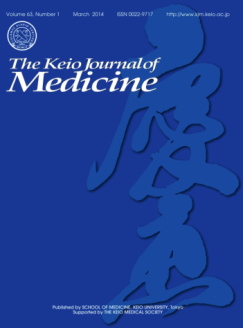
- |<
- <
- 1
- >
- >|
-
Daigo Ochiai, Hirotaka Masuda, Yushi Abe, Toshimitsu Otani, Marie Fuku ...原稿種別: REVIEW
2018 年 67 巻 4 号 p. 57-66
発行日: 2018年
公開日: 2018/12/26
[早期公開] 公開日: 2018/03/06ジャーナル フリー HTMLMesenchymal stem cells (MSCs) have generated great interest in the fields of regenerative medicine and immunotherapy because of their unique biological properties. Among MSCs, amniotic fluid stem cells (AFS) have a number of characteristics that make them attractive candidates for tissue engineering and cell replacement strategies, particularly for perinatal medicine. If various neonatal conditions, including birth asphyxia, preterm birth, and congenital abnormalities, which result in long-lasting severe impairments, could be predicted during pregnancy, it would allow collection of small samples of amniotic fluid cells by amniocentesis. In vitro culture of these autologous AFS during pregnancy would make them available for use soon after birth. Hypoxic-ischemic encephalopathy (HIE) and myelomeningocele (MMC) are neonatal conditions that cause permanent neurological disability, for which the treatment options are extremely limited. Experiments using animal models of HIE and MMC and human clinical trials have demonstrated that MSCs, including AFS, have beneficial effects on the central nervous system through paracrine influences, indicating that autologous AFS treatment may be applicable for intractable neurological diseases, including HIE and MMC, during the perinatal period. In this review, we focus on recent research related to the therapeutic potential of AFS for perinatal neurological diseases such as HIE and MMC.
抄録全体を表示PDF形式でダウンロード (4915K) HTML形式で全画面表示
-
Yuji Otsuki, Hirofumi Konn, Keisa Takeda, Masahiko Koike原稿種別: ORIGINAL ARTICLE
2018 年 67 巻 4 号 p. 67-71
発行日: 2018年
公開日: 2018/12/26
[早期公開] 公開日: 2018/03/14ジャーナル フリー HTMLObturator hernia (OH) is a rare condition that accounts for 0.073–1% of abdominal hernias and 0.48% of bowel obstructions. OH frequently occurs in elderly women, with an incidence that increases with age. The only treatment for OH is surgical intervention, and the approaches used vary greatly. Consequently, a well-defined consensus has not yet emerged. We assessed the efficiency and safety of the midline extraperitoneal approach for OH. Six patients with OH repaired using the midline extraperitoneal approach at KKR Sapporo Medical Center between April 2011 and January 2016 were included in the study. We retrospectively evaluated the patient characteristics, intraoperative findings, and the postoperative course. All patients were elderly women [median age, 90 (range, 79–92) years], with a median body mass index of 17.0 (range, 15.6–18.3) kg/m2 at presentation. All had symptoms associated with bowel obstruction: two patients presenting with leg pain had the Howship–Romberg sign. In two patients, bowel resection was required because of irreversible ischemic changes. Five patients had coexisting femoral and inguinal hernias that were repaired by bilateral mesh repair. One patient had aspiration pneumonia as a postoperative complication. All patients were discharged alive, without infection or recurrence. OH can be efficiently and safely repaired using the midline extraperitoneal approach. This approach establishes the diagnosis of OH, avoids injuring obturator vessels, gives improved exposure of the obturator canal, enables identification and simultaneous repair of other pelvic hernias, and facilitates bowel resection. This approach reduces the risk of mesh infection in patients undergoing bowel resection.
抄録全体を表示PDF形式でダウンロード (1189K) HTML形式で全画面表示
- |<
- <
- 1
- >
- >|